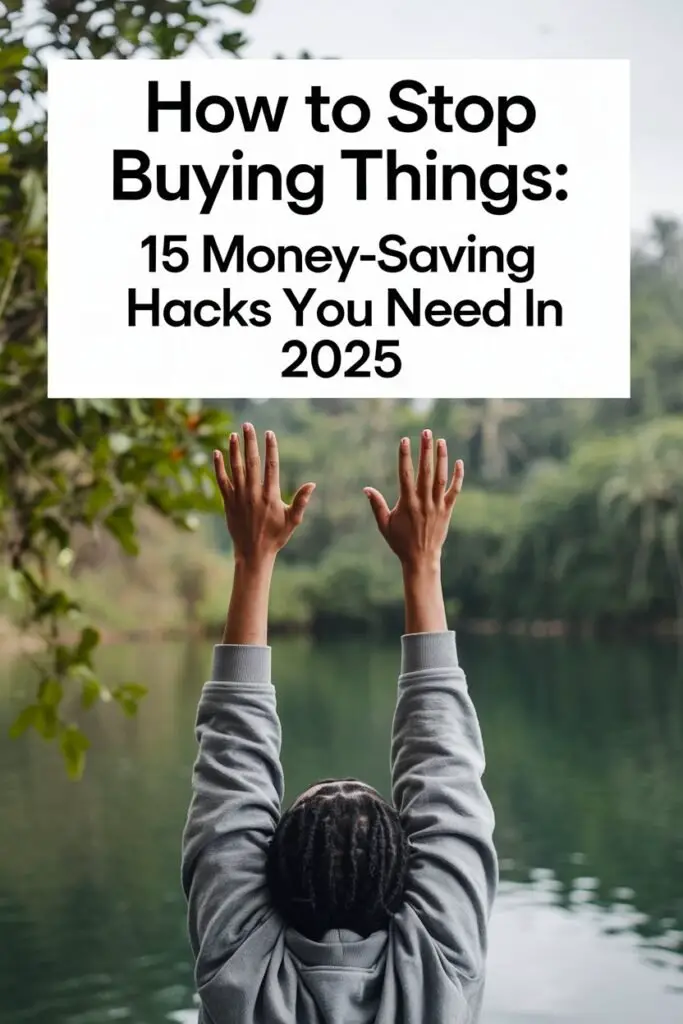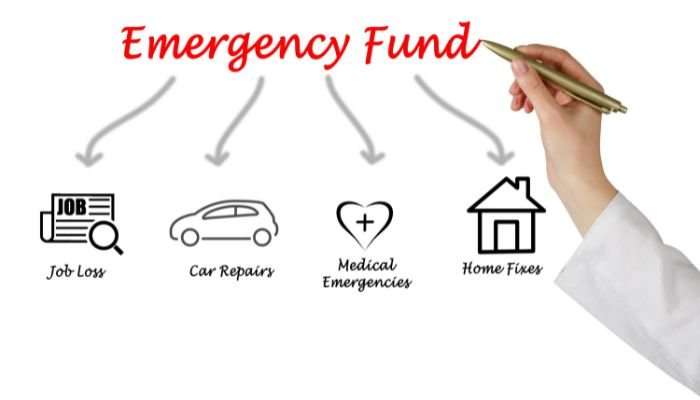Disclaimer: This post may contain affiliate links, meaning we get a small commission if you make a purchase through our link at no extra cost to you. For more information, please visit our Disclaimer Page.
According to a 2023 report by Statista, the average person spends over $18,000 annually on non-essential items.
Learning how to stop buying things can feel challenging in today’s consumer-driven world. It’s easy to fall into the trap of purchasing items you don’t need, but taking control of your spending is possible.
I’ve been there—spending mindlessly to fill emotional gaps or impress others. But I wanted financial freedom, so I made changes. Breaking free from this cycle transformed my finances and life.
In this guide, I’ll share 15 things I stopped buying, the psychology behind overspending, and steps to help you regain financial control.

The Psychology Behind Overspending
Understanding why we overspend is critical to breaking the habit. Below are three key drivers:
1. Emotional spending
Many people shop to cope with stress, celebrate achievements, or address unmet emotional needs.
Research from Psychology Today highlights emotional spending as a major contributor to debt.
While these purchases may provide temporary relief, they often result in long-term regret.
2. Social pressures
Platforms like Instagram and TikTok amplify the fear of missing out (FOMO), pushing people to buy trendy items.
Social media fuels comparisons, making it seem like others lead more luxurious lives.
This pressure to “keep up” frequently leads to unplanned expenses and financial stress.
3. Convenience culture
One-click shopping and same-day delivery have simplified impulse buying.
Retailers exploit this ease with targeted ads, free shipping, and time-sensitive deals like 50 per cent off for the next hour. Recognizing these tactics helps curb unnecessary spending.
Why one-click shopping fuels overspending
Decades ago, buying an item required visiting a store. Today, one-click purchases and instant delivery remove friction, making impulse buys effortless.
Retailers further incentivize quick decisions through personalized promotions and urgency-driven discounts.
15 Things I Stopped Buying (And Why You Should Too)
1. Bottled Water
The problem: Spending $1-$3 per bottle adds up to over $1,000 annually for many families.
My solution: I invested in a quality reusable water bottle. Not only does it save me serious money, but it’s also better for the environment.
Quick fact: Americans spend a collective $16 billion on bottled water each year. That’s money literally going down the drain!
2. Fast Fashion
The problem: Those $15 shirts and $20 jeans wear out after a few washes, creating a cycle of constant replacement.
My solution: I built a capsule wardrobe with versatile, high-quality pieces. These items last years instead of weeks, and I always have something to wear.
Personal win: After switching to a capsule wardrobe, I cut my clothing expenses by 70% while developing a more timeless style I actually love.
3. Forgotten Subscriptions
The problem: Those “only $9.99 a month” services add up fast, especially when you forget you have them.
My solution: I now do a quarterly subscription audit and immediately cancel anything I’m not using regularly. Apps like Truebill have been super helpful for tracking these sneaky expenses.
Reality check: The average person wastes about $200 annually on subscriptions they rarely or never use.
4. Daily Coffee Shop Visits
The problem: That $5 latte habit costs a shocking $1,825 per year.
My solution: I invested in a decent coffee maker and now brew at home. I can customize my drinks exactly how I like them, and they taste just as good.
Bonus tip: Treat yourself to a coffee shop visit occasionally as a reward, not a daily habit.
5. Brand-Name Groceries
The problem: We pay premium prices for fancy packaging, not better quality.
My solution: I switched to store brands for basics like pasta, cereal, and cleaning supplies.
Interesting fact: Consumer Reports found that many store-brand products are identical to name brands – often made in the same factories!
6. Single-Use Cleaning Products
The problem: They’re expensive and terrible for the planet.
My solution: I switched to reusable cloths and DIY cleaning solutions made with vinegar and baking soda. They work just as well at a fraction of the cost.
7. Impulse Purchases
The problem: Those “just this once” purchases can drain hundreds of dollars monthly.
My solution: I created a 30-day waitlist for non-essential items. If I still want something after a month, I know it’s not just impulse.
Pro tip: Simply writing down purchase desires often reduces the urge to buy impulsively.
8. Unused Gym Memberships
The problem: Many of us pay for memberships we barely use, especially after January.
My solution: I discovered the world of free fitness resources. Between YouTube workouts and local park facilities, I get better variety than I ever did at the gym.
9. Paper Towels
The problem: They seem cheap but add up quickly over time.
My solution: I invested in a stack of washable kitchen towels and microfiber cloths. This simple swap saves me hundreds of dollars annually.
10. Random Decorative Items
The problem: They collect dust, create clutter, and rarely bring lasting joy.
My solution: I embraced minimalism and only buy pieces that have meaning or serve a purpose. My space feels cleaner, more peaceful, and easier to maintain.
11. Cable TV
The problem: Paying for hundreds of channels you’ll never watch is a waste.
My solution: I cut the cord and kept only two streaming services. I rotate them occasionally to access different content.
12. Pre-Packaged Meals
The problem: The convenience markup is enormous.
My solution: I spend a couple hours meal prepping on Sundays, which saves me time during busy weekdays and dramatically cuts my food budget.
Health bonus: Harvard Health reports that meal prepping reduces food waste by about 20%.
13. Extended Warranties
The problem: They often duplicate protection you already have through standard warranties or credit cards.
My solution: I research products thoroughly before buying and set aside money for potential repairs instead.
Industry secret: Most extended warranties go unused, which is why retailers push them so hard – they’re almost pure profit.
14. High-End Tech I Don’t Need
The problem: Premium features often go unused by average consumers.
My solution: I buy technology based on my actual needs rather than marketing hype. Refurbished devices have served me just as well at half the price.
15. Trendy Gadgets
The problem: They’re exciting for a week before collecting dust.
My solution: I now wait six months before buying trending items. If I still want it after the hype dies down, it might be worth considering.
How These Changes Transformed My Life
These weren’t just financial changes – they completely shifted my perspective:
- Debt Freedom: I cleared $5,000 in debt in just two years
- Security: I built a six-month emergency fund for the first time in my life
- Mental Peace: Fewer purchases meant fewer financial worries and clearer priorities
The best part? I don’t feel deprived. If anything, I appreciate what I do buy so much more. My relationship with money has completely changed – from stress and scarcity to confidence and control.
What unnecessary expenses could you cut from your life? Even starting with just one or two items from this list could put thousands back in your pocket this year.
These are the 15 ways on How To Stop Buying Things
Wrapping things up
Transforming your spending habits isn’t just about saving money. It’s about taking control of your life and building a future that aligns with your goals.
By cutting out unnecessary expenses, you’ll free up resources to invest in what truly matters.
Take the First Step: Download our free “Spending Detox Guide” and join the community of others on the journey to financial freedom.
Let’s make 2025 the year you stop buying and start thriving!
Download your free Spending Detox Guide and start saving today!





